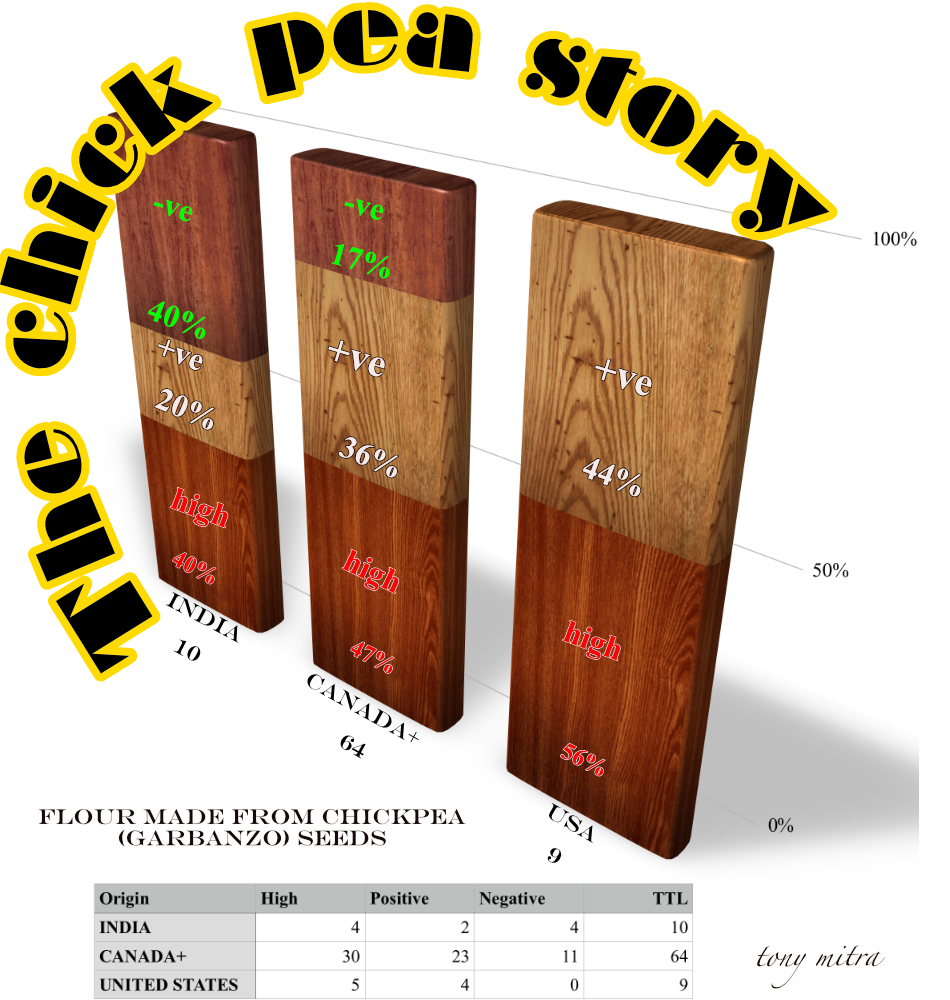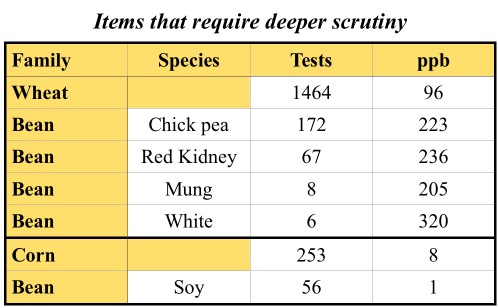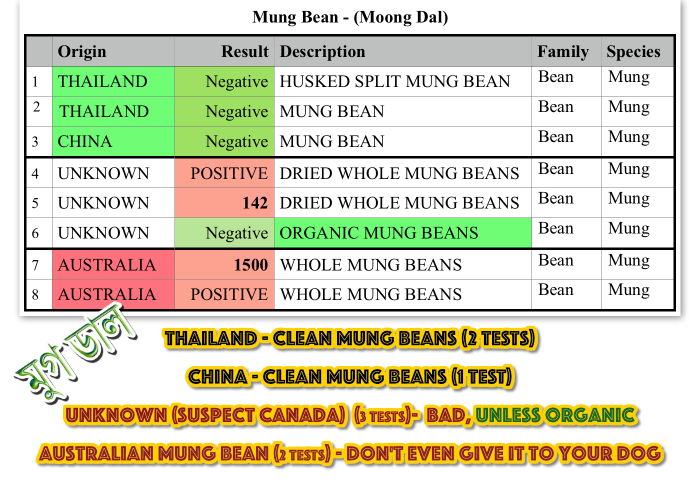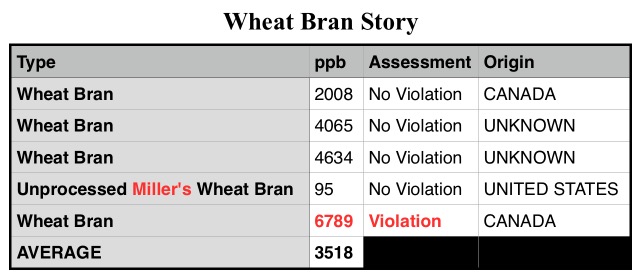This is going to be discussed in the book being written. But for now, here is the preliminary text on the issue of glyphosate in tofu.
It first came to my attention that while glyphosate was detectable in soy flour by the CFIA tests, it was strangely absent from 50 samples of conventional tofu. I could not figure out why or how the glyphosate disappeared from tofu, if it was already there in the flour used to make tofu. I asked a few scientists I knew. That started the ball rolling. And by now, the issue of glyphosate in tofu has gone beyond CFIA test records. It has started by me wondering why tofu tested by CFIA turned out with zero glyphosate while the soy flour it is made from contains much of the herbicide. I had made an earlier brief post on it on Facebook.
Well, the subject has caught attention of a number of scientists and caused a bit of investigation. While the jury is still out, and while no doubt some more investigation might continue by those that are able to conduct further glyphosate tests during the process of tofu making, a couple of details are beginning to emerge. These are :
As a preparatory step to tofu making, the soy flour is mixed in water and boiled. In this process some of the proteins that incorporated glyphosate, as well as some of the carbohydrates, get denatured, thus releasing the glyphosate out from their molecular bonds.
Next, the curdling of tofu is achieved by coagulants which can be either magnesium chloride MgCl2 or calcium sulphate Ca(SO4), salts of bivalent metals Magnesium or Calcium. Some countries like using MgCl2 while others use CaSO4 as coagulant.
Now, glyphosate, which is an amino acid, apparently very readily bonds with these salts of magnesium or calcium, and the resultant salt is very soluble in water.
So, during the process of tofu making, when the curdled tofu paste is pushed down and the water is being separated, to be eventually discarded, the glyphosate that had been released during the denaturing of the proteins and carbohydrates get caught and bonded with the coagulant to form Calcium or Magnesium salts in solution in the discarded water, and can no more be found in the tofu.
In some ways, the to fu making process filters out the glyphosate and gets discarded with the water. This is likely going to be tested eventually by someone in due course, as a confirmation.
Meanwhile, the issue remains about how much of the glyphosate was released when the stuff was boiled. There is a point of view that not all of it gets released, and some remain tightly bound with their parent structure, such that the boiling does not release them. Not just that, but their spectogram is not where glyphosate or AMPA would show up. Therefore LC-MSMS tests may not detect their presence.
Because of these two factors, a) most of the identifiable glyphosate having been captured and removed into the discarded water as magnesium or calcium salts and b) any remaining glyphosate stays undetectable by mass spectrometry, thereby becoming invisible and resulting in possible false negative.
That the above b) might be correct, was deduced by cross checking of scientists with their colleagues back in Asia, where comparative study of body organs was made between subjects that ate GMO tofu and those that did not.
Curiously, part of a new powerpoint slides made for the purpose was named Mitra-Samsel-17.pptx. That made me smile.
Here is one of the slides.
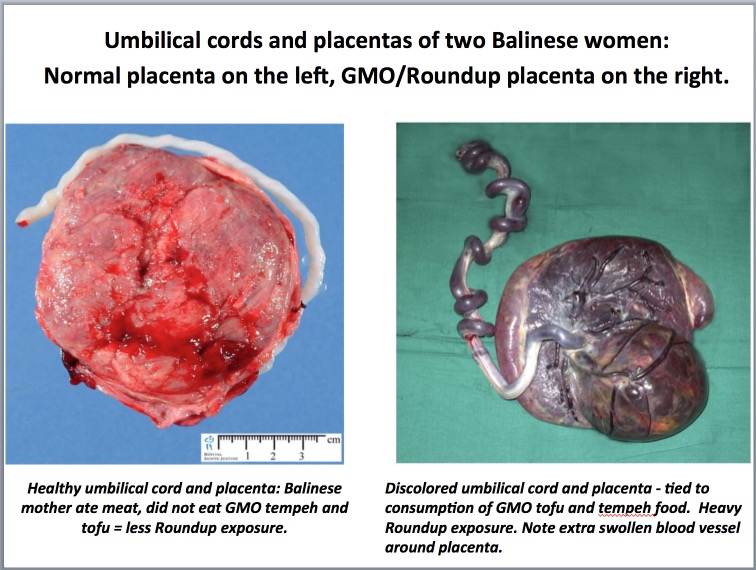
Anyhow, about any glyphosate that did not get trapped in the discarded tofu water, and evades detection, may still be able to cause trouble for consumers, though I should assume it would be less toxic due to the glyphosate that had been removed by the coagulant.
This brings the subject back to the techniques used by the labs, to prepare the sample before glyphosate testing can be done. Apparently most of the glyphosate in the sample can be released for detection by proteolysis using proteinase K or acid hydrolysis. Proteinase K is an enzyme derived from fungus and is not subjected to glyphosate exposure, while other animal enzymes may be contaminated with glyphosate because of their feed.
Therefore, using the right preparatory step taken by the lab before testing glyphosate in samples, especially of proteinaceous samples, might be critical. However, we do not know at this stage what methods were used by the labs employed by CFIA. To the best knowledge of some of the US scientists, most US labs had no knowledge of the problems relating to detection of glyphosate embedded in proteins. They often used an older method of using acidulated methanol to release glyphosate, which may give false results.
Anthony Samsel had the following questions.. “Also, I need to know about CANADA’s methods of testing for Glyphosate in these 7000 samples.. Is it GC MS, HPLC MSMS or ELISA and if they are using acidulated methanol. The reason that I ask, most labs doing HPLC use acidulated methanol in the method. This can mask GLLYPHOSATE so that you don’t get accurate results they are too low and or low levels disappear completely giving a false negative result….”
I should be trying to find some of the answers. While I do not have a confirmation, I can see signs that CFIA first subjected all samples to an ELISA test called glyphosate screening. Results would be either ‘negative’ meaning no glyphosate found, or ‘positive’ meaning glyphosate was detected. No level of concentration of glyphosate was detected in this test. Both results will be entered in the CFIA data, as positive, or negative.
Then, all samples that resulted ‘negative’ will be put aside.
All samples that proved ‘positive’ will be sent again for a costlier LC-MSMS test which was able to detect presence and concentration of glyphosate and AMPA simultaneously.
The result is entered by CFIA as follows:
If there was only glyphosate detected, a single entry is made agains that sample – for glyphosate concentration in ppm
If both glyphosate and AMPA were detected, two entries are made against that sample – one for glyphosate and one more for AMPA.
Thus, a specific food sample can have following entries in the CFIA record:
- Just one record – negative
- Two records, one for ‘positive’ and another for ppm glyphosate
- Three records, one for ‘positive’, one for ppm glyphosate and yet another on ppm AMPA
That answers part of Anthony Samsel’s question, but still leaves out how precisely did the labs try to pull the glyphosate out of the proteinaceous matter? If the US labs knew nothing about using correct proteolysis, then can we expect Canadian labs to do better? This is a question I shall later try to find an answer to. For now, we do not know.
Lastly, the latest science paper that Stephanie Seneff and Anthony Samsel are awaiting publication of, apparently mentions that even Monsanto, or Dupont had found out years ago that if the correct proteolysis was done before testing, the yield in detectable glyphosate in a sample can increase 60 to 120 fold. Thats a staggering level of glyphosate that remains undetectable unless the right step is taken.
So, what do we learn from all this, and the fact that in the CFIA tests, soy flour showed presence of glyphosate, but tofu did not?
At this stage, your guess may be as good as mine.

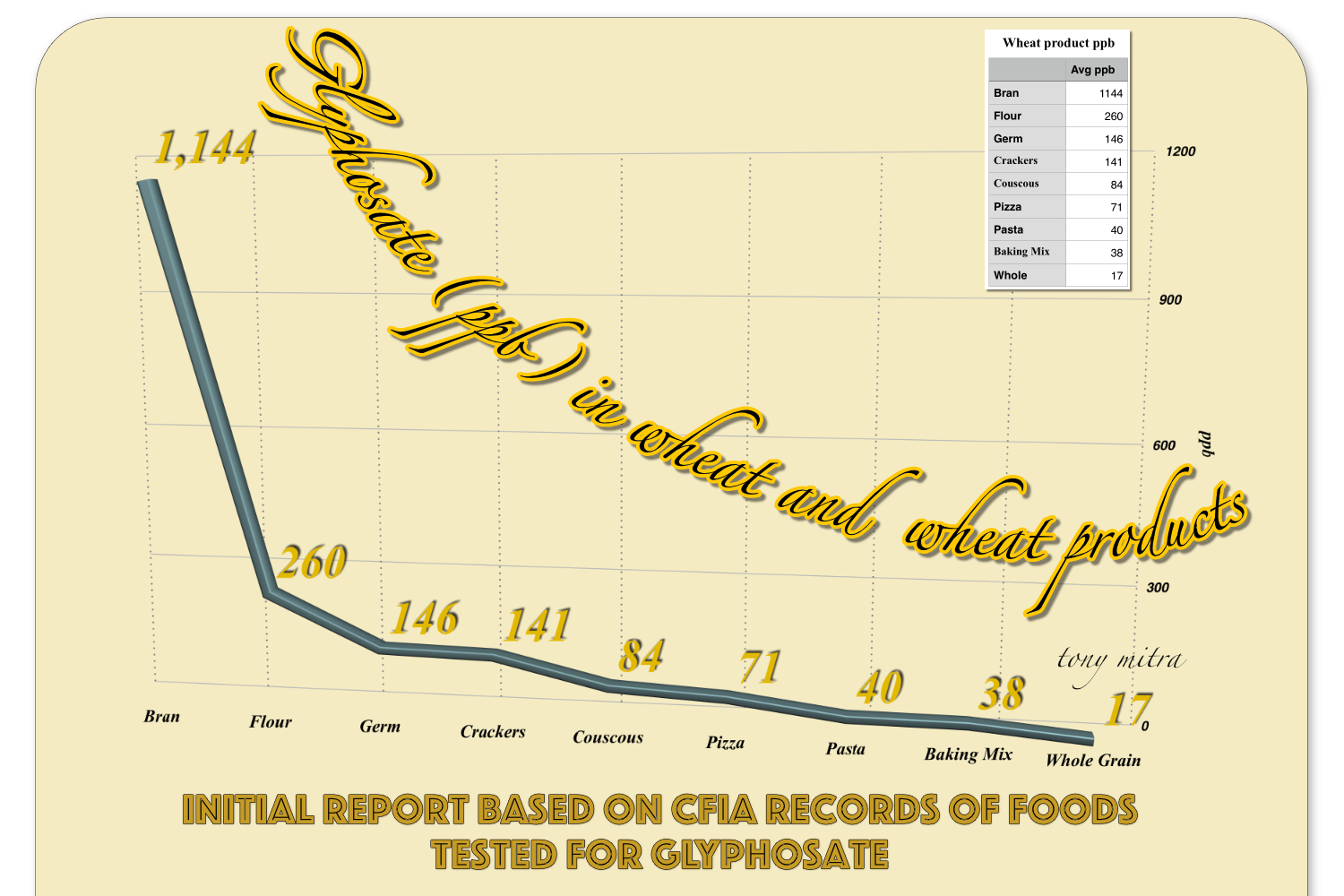
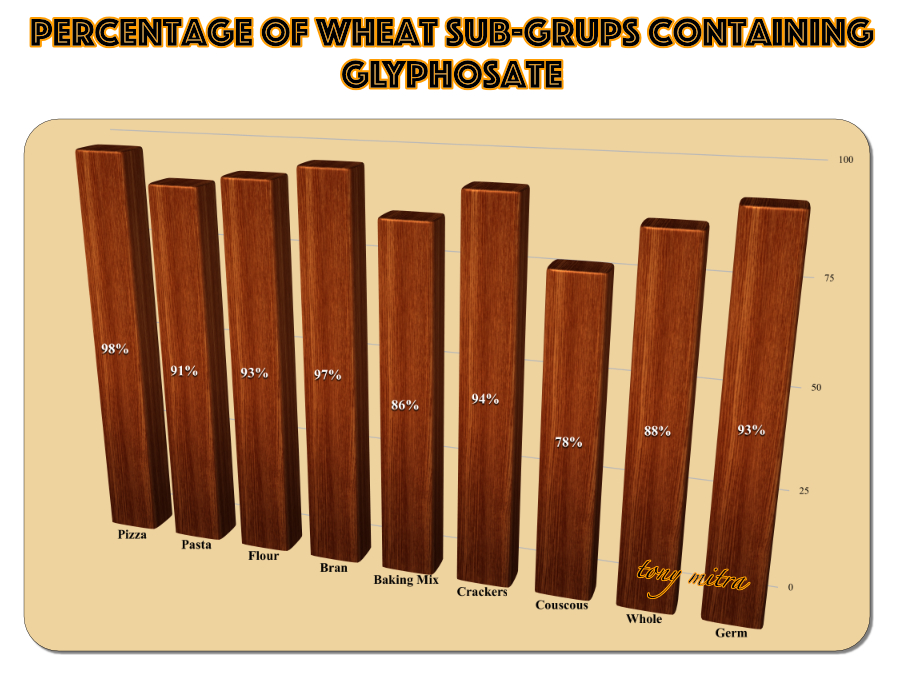
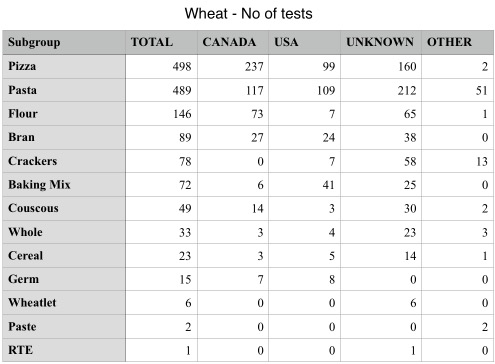
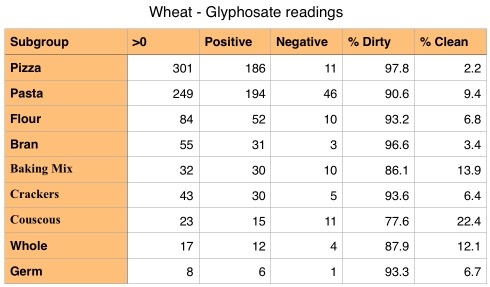
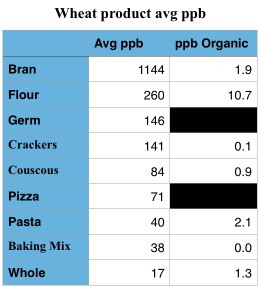
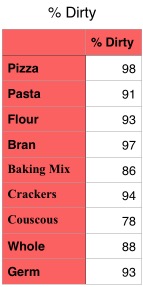
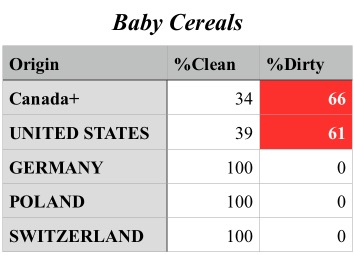
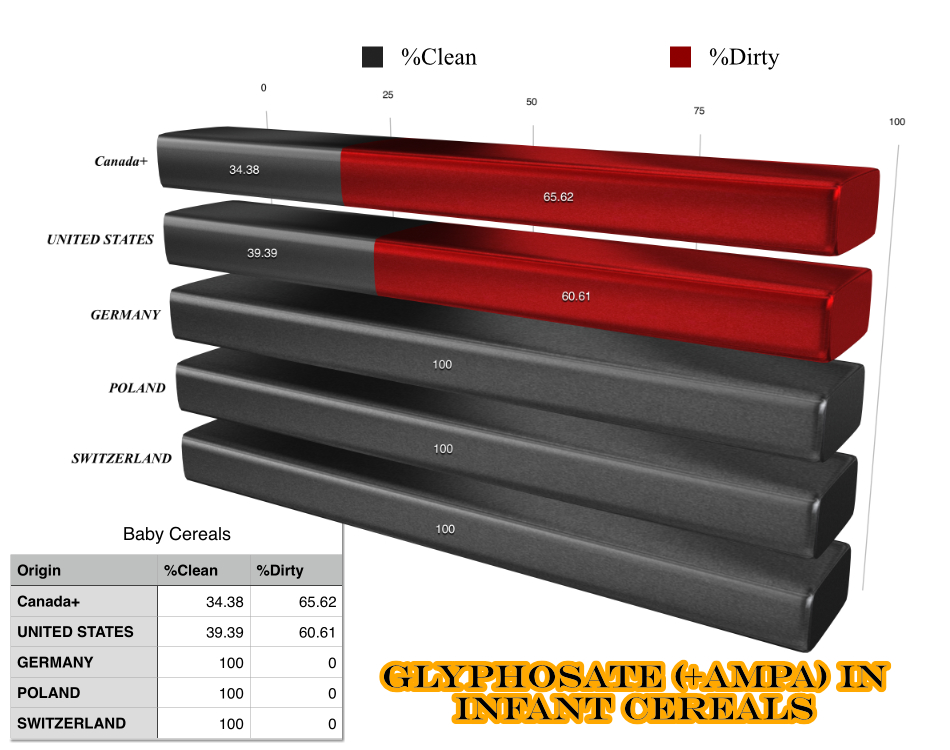
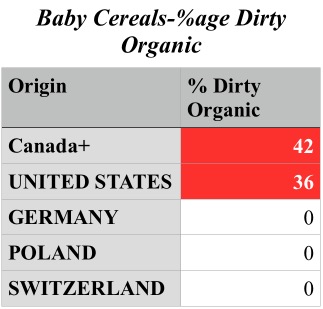 I found a few curious entries within the North American samples, which could be a give-away of its brand name. Three samples were described as Leapin’ Lemurs, Choco Chimp, and Koala Crisp. All of them were entered under infant cereals. I could not figure out what ingredients were used here, such as wheat, or oatmeal or rice etc, so I googled the names. It turned out, these are products by “Nature’s Path“. All three of them contained no glyphosate at all. So, out of this horror story, there was a sort of silver lining.
I found a few curious entries within the North American samples, which could be a give-away of its brand name. Three samples were described as Leapin’ Lemurs, Choco Chimp, and Koala Crisp. All of them were entered under infant cereals. I could not figure out what ingredients were used here, such as wheat, or oatmeal or rice etc, so I googled the names. It turned out, these are products by “Nature’s Path“. All three of them contained no glyphosate at all. So, out of this horror story, there was a sort of silver lining. I don’t have an infant at home and I do not like to eat processed food any more. However, I am very aware and conscious of the fact that infants and kids are far more vulnerable to illness and auto-immune triggers due to their low body weight and insufficiently developed immune system.
I don’t have an infant at home and I do not like to eat processed food any more. However, I am very aware and conscious of the fact that infants and kids are far more vulnerable to illness and auto-immune triggers due to their low body weight and insufficiently developed immune system. Attached here is a table of the infant baby cereals for only three countries, to highlight my point – Unknown, Canada and USA, where Canada and unknown are kept separate. As you an see, the results bode much worse for Canada, with only 13% clean and 87% dirty. Another way of looking at it might be, if you are buying infant cereals, and if you can find “Canada” in the label somewhere – don’t buy it. Chances of you getting a slow dose of glyphosate would be seven our of eight !
Attached here is a table of the infant baby cereals for only three countries, to highlight my point – Unknown, Canada and USA, where Canada and unknown are kept separate. As you an see, the results bode much worse for Canada, with only 13% clean and 87% dirty. Another way of looking at it might be, if you are buying infant cereals, and if you can find “Canada” in the label somewhere – don’t buy it. Chances of you getting a slow dose of glyphosate would be seven our of eight !
